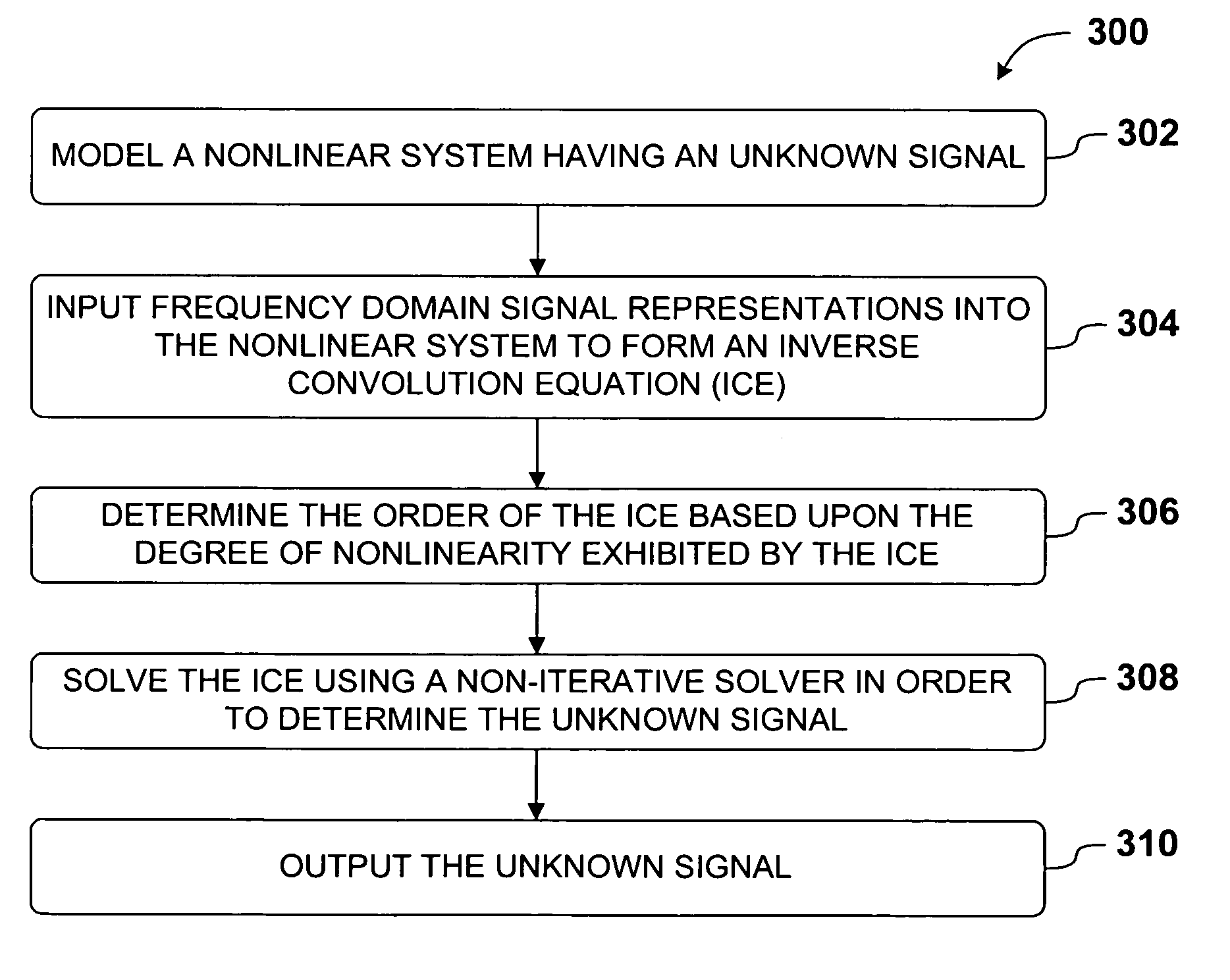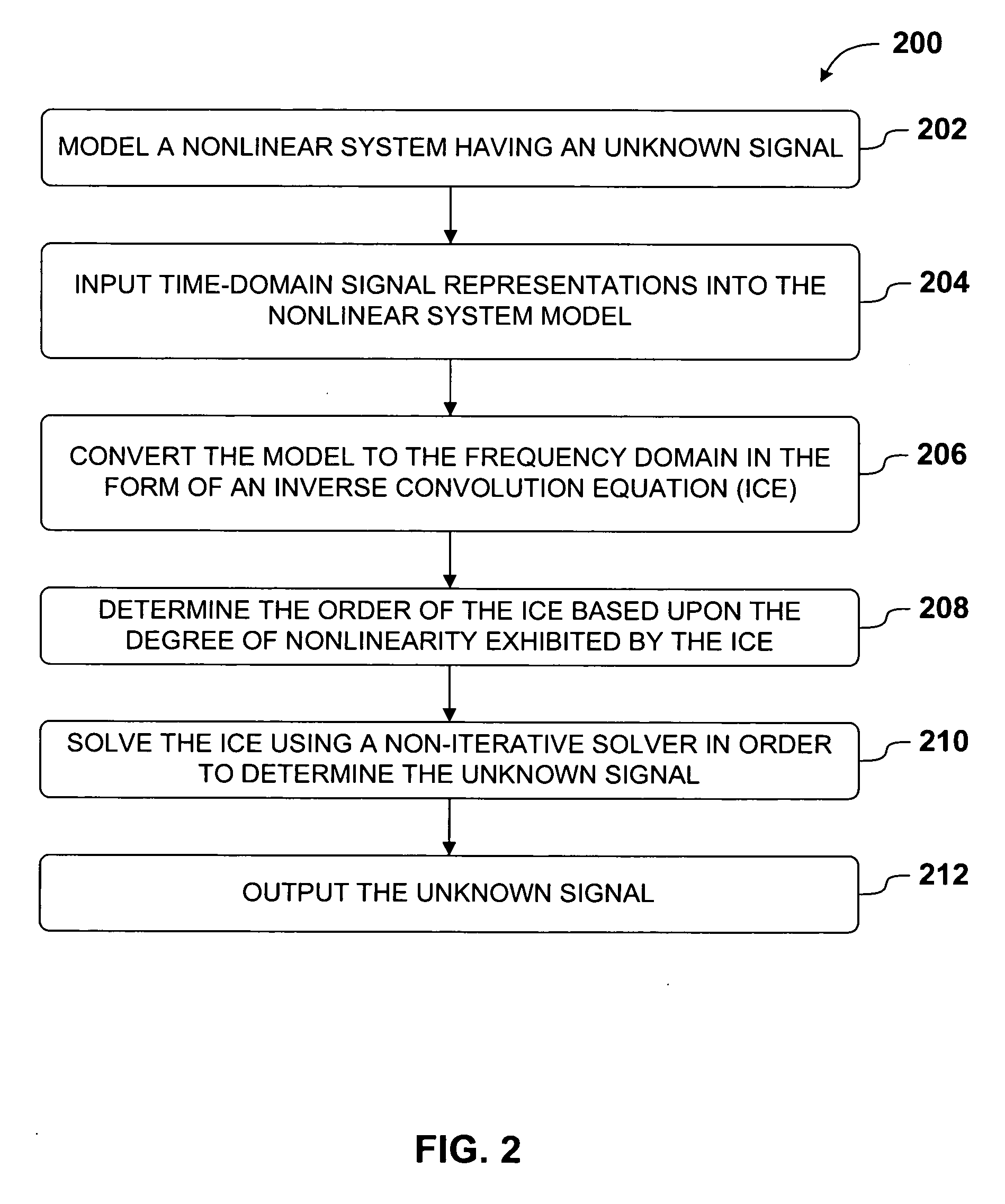Efficient non-iterative frequency domain method and system for nonlinear analysis
a frequency domain and nonlinear analysis technology, applied in the field of efficient algorithms and software methods for the analysis and simulation of nonlinear radio frequency and analog circuits, can solve the problems of nonlinearity in the possibility of self-mixing with the rf signal, and the presence of nonlinearity in the circuit system may be extensive, so as to achieve accurate and efficient simulation of nonlinear systems
- Summary
- Abstract
- Description
- Claims
- Application Information
AI Technical Summary
Benefits of technology
Problems solved by technology
Method used
Image
Examples
Embodiment Construction
[0027] The nonlinear solver algorithm method detailed herein provides a non-iterative approach that overcomes the limitations of the prior art because it is accurate, it guarantees convergence. The nonlinear solver algorithm involves a novel approach to solving inverse convolution equations which are prevalent in frequency representations of nonlinear systems, especially electrical circuits and particularly RF, analog, and microwave electrical circuits. As a result, the ability to solve inverse convolution equations with assured convergence allows for increased speed and accuracy in simulating nonlinear systems.
Inverse Convolution Equations
[0028] As noted above, inverse self convolution equations are generally found in frequency domain representations of nonlinear systems. There are several reasons that frequency domain analysis is the preferred method for the simulation of nonlinear systems including, but not limited to, the following. First, real world signals typically consist...
PUM
 Login to View More
Login to View More Abstract
Description
Claims
Application Information
 Login to View More
Login to View More - R&D
- Intellectual Property
- Life Sciences
- Materials
- Tech Scout
- Unparalleled Data Quality
- Higher Quality Content
- 60% Fewer Hallucinations
Browse by: Latest US Patents, China's latest patents, Technical Efficacy Thesaurus, Application Domain, Technology Topic, Popular Technical Reports.
© 2025 PatSnap. All rights reserved.Legal|Privacy policy|Modern Slavery Act Transparency Statement|Sitemap|About US| Contact US: help@patsnap.com



